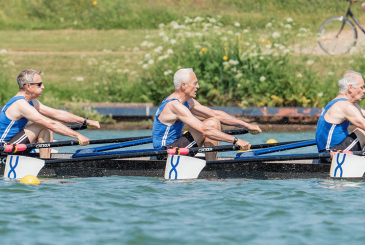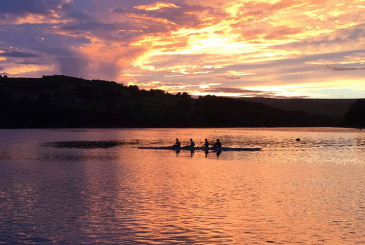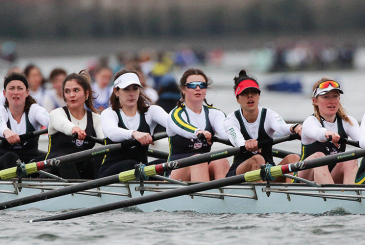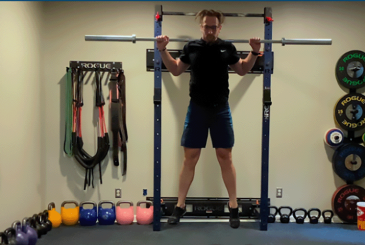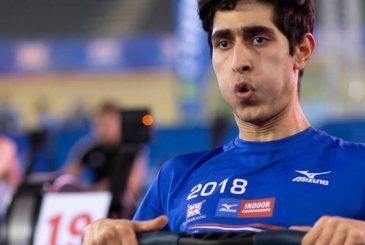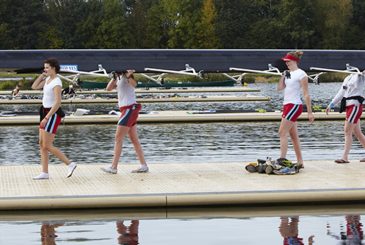‘Everyone trains hard, but not everyone recovers hard.’ How can active recovery help your rowing sessions? Dr Mark Homer explores the research
Active recovery is a widely used term in sport and exercise, and one that can have slightly different meanings depending on the context.
What is active recovery?
Within a training session, active recovery is what you do instead of sitting still, hunched over your blades, gasping for air between pieces. Paddling back to the start to do it all again, keeping the body moving, is a great example.
At the end of an intensity session or race preparation, an active recovery is otherwise known as the cool-down. It involves a gentle return to homeostasis (stability) rather than an abrupt end which results in you still panting and sweating after your shower while trying to get dressed.
A further use of the term comes into play on rest or easy training days. You may have heard: “Day off tomorrow but do some active recovery” as you leave the boathouse after a tough session. In this case, the coach is keen that you don’t spend the whole day horizontal and do something that loosens the joints and gets the blood flowing. Anecdotally, from my experience with elite rowers, a day off can often lead to some less than ideal training when athletes return 24 hours later. Doing something active can alleviate this effect.
“Our body can only start to adapt and improve its systems when it in a state of rest”
Why do active recovery sessions?
The science behind active recovery and how to use it is based on the circumstances. Research by Brown et al (2014) investigated the effect of passive vs active recovery between high-intensity intervals of different lengths (45 and 180 seconds). Results suggested that when recovery time is short, passive rest will lead to better sprint performance in subsequent sprints – on a static bike in this case. However, when recovery time was long, consequent sprints benefited from spinning the legs between repetitions.
This difference was attributed to the effect of maintaining an elevated heart rate during the active recovery. A higher heart rate means increased circulation of blood, which will accelerate the clearance of fatigue causing metabolites that accumulate in the blood. Blood lactate isn’t one of these, but it is a proxy for them that is easy to measure, hence the popular misconception that lactate causes us to blow up and slow down. With shorter rests, there isn’t time for this effect to have impact, but with increased recovery it can make a difference.
At the end of a session, particularly a fatiguing one, the temptation is to drop your oar(s) and eat your own body weight as soon as possible. However, gradually returning to a resting state may be more beneficial for the same reasons previously mentioned.
Our body can only start to adapt and improve its systems when it in a state of rest. Clearing the by-products of exercise efficiently will mean this process starts earlier (although, anecdotally, some might argue that presence of these metabolites for longer provides a stronger stimulus to adapt).
Active recovery will also certainly provide an opportunity to mentally unwind. This is particularly important following a race when you may need to prepare for further competition within minutes or hours.
“It isn’t training if you don’t have to change your underwear afterwards”
How best to do active recovery
When the training programme states ‘active recovery’, it can be easy to interpret this as an opportunity to do some actual training. “I’ll just smash out a steady 18km on the ergo” or “I’ll sit in the peloton for the 50km club ride” may be thoughts that run through your head when your legs start to twitch. We’ve all been guilty of trying to squeeze in that extra session because we believe more training is always better.
“Everyone trains hard, but not everyone recovers hard”
I once heard a very successful coach say: “everyone trains hard, but not everyone recovers hard”. Sometimes, less is more. An active recovery session is an opportunity to move about, but not one to get some more mileage done. I have a rule that it isn’t training if you don’t have to change your underwear afterwards. With this in mind, go for a walk, a family bike ride, or a knockabout at the local tennis court.
Swimming is a great form of active recovery (an exception to the change of underwear rule) – non-weight bearing and whole body. It is worth considering the energy cost though. So, if you’re a weak swimmer, only a few lengths can be quite taxing in a very technically demanding mode of travel. Also, while swimming is is a useful option when injured as a means of keeping the engine running while you heal, it’s very dependent on the upper body – limbs that rowers tend to injure more than most.
Active recovery top tips
Whatever the activity you choose, be aware that less familiar movements often rely on lesser used muscle groups and joints. Do as you are told and keep things easy and relatively short. Your coach won’t be happy if a scheduled active recovery day results in a nasty case of tennis elbow!
Remember that this is also an opportunity to think about something that isn’t rowing training and technique. Take the opportunity to socialise and have some fun. It’s okay to be a tourist in some sports, and more than okay to be rubbish at some of them!
Photo: Drew Smith
This article was first published on 18 February 2022.





